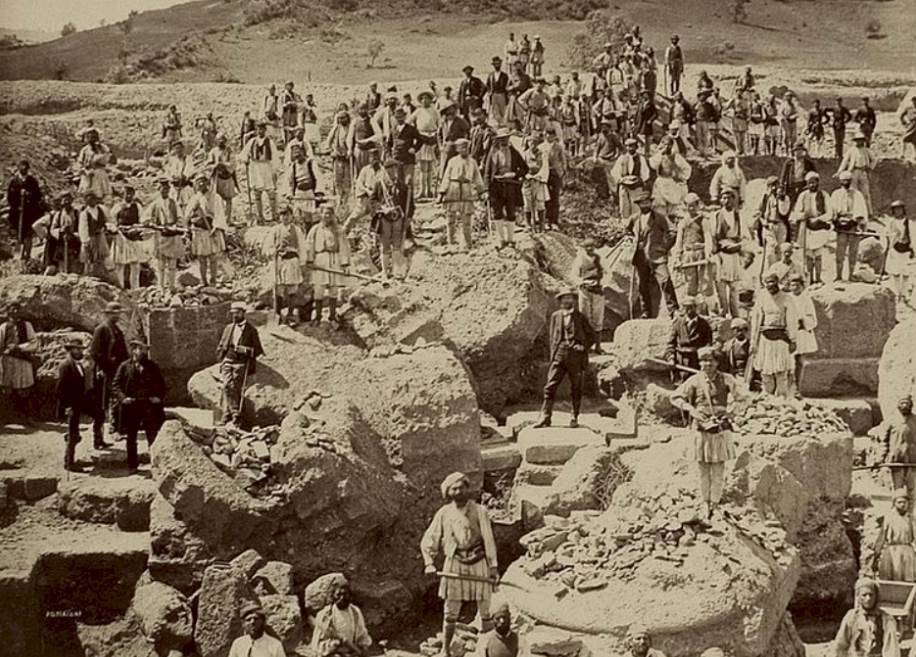Ancient Greece was home to a lot of amazing temples and statues.
Considered to be one of the 7 wonders of the ancient world, the Statue of Zeus at Olympia was a huge statue dedicated to honoring Zeus, the ruler of the Gods of the ancient Greeks.
In this post, you’ll discover the ultimate list of facts about the Statue of Zeus at Olympia.
1. What is the Statue of Zeus at Olympia?
The Statue of Zeus at Olympia was a gigantic chryselephantine sculpture of Zeus, ruler of the gods in Ancient Greece. It was created around 435 B.C.
It was made with ivory, gold and decorated with various precious stones. Remarkably, it was merely decorated with ivory and gold panels as its substructure was made of wood.
It was made in the image of Zeus and we know how the statue looked like through various contemporary descriptions and engravings in Greek and Roman coins.
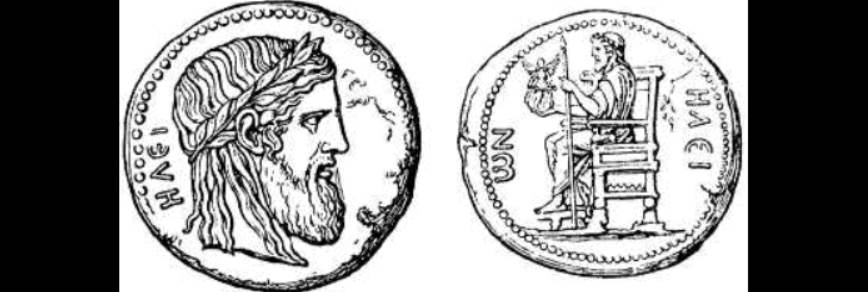
2. Where was the Statue of Zeus at Olympia located?
The Temple of Zeus at Olympia was located in the South of Greece on the Peloponnese in the region of Elis.
Here, in the ancient city of Olympia, the Eleans held the Olympic Games every 4 years, bringing them a lot of prosperity.
Olympia was also home to the Temple of Zeus, an ancient Greek temple built in honor of Zeus.
Remarkably, the Statue of Zeus was located inside this temple.
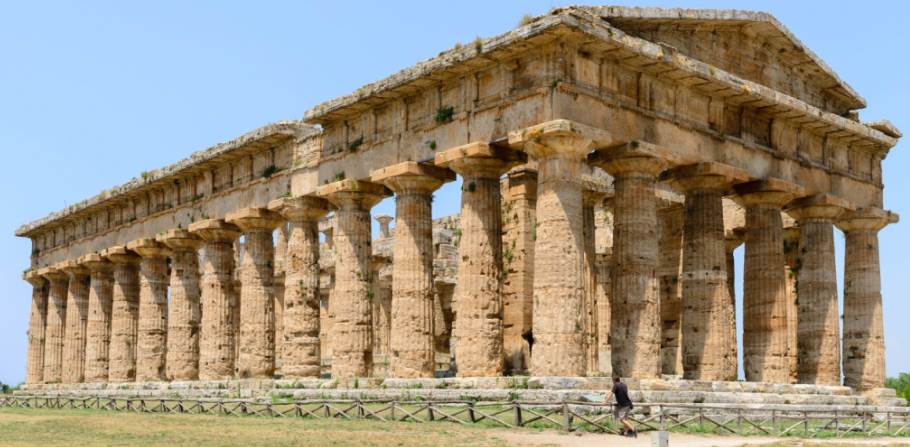
3. Who created the Temple of Zeus at Olympia?
Because of the wealth that the Eleans were acquiring as hosts of the popular Olympic Games, which were popular all over Greece, they were able to order a huge statue in honor of Zeus.
They commissioned one of the most renowned sculptors of those days named Phidias, who was also the creator of the Athena Parthenos inside the famous Parthenon on the Acropolis in Athens.
They were unaware that Phidias had been accused of embezzling some of the gold that was supposed to be used for the Athena Parthenos. It’s likely though that the accusations might have been politically motivated for having the wrong friend, Pericles, who wasn’t liked in Athens.
Either way, in 435 B.C. Phidias created a workshop just west of the Temple of Zeus and started his work on the Statue of Zeus at Olympia. It took him nearly 12 years to complete it.
4. How big was the Statue of Zeus at Olympia?
We need to remember that in those days, there weren’t any skyscrapers. The tallest structure at the time was the Great Pyramid at Giza, and the second tallest in ancient times, the Lighthouse of Alexandria hadn’t been built yet.
So seeing a statue that approximately stood 13 meters (41 ft) tall, which is the equivalent of a 4-story building, must have been a remarkable sight.
This combined with the fact that Zeus was seated and located inside the Temple of Zeus, occupying its full height, makes it understandable why it has been included in the list of 7 wonders.
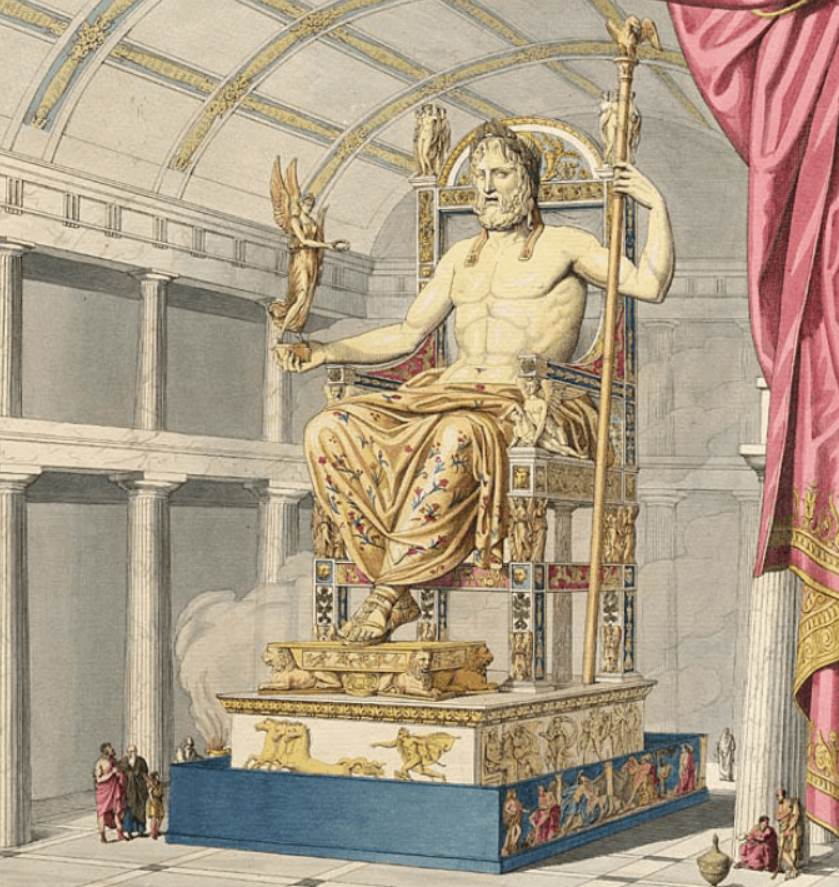
5. How was the Statue of Zeus at Olympia destroyed?
One story written by the Roman historian Suetonius, mentions that the Roman Emperor Caligula ordered the removal of all statues of the gods and replace their heads with his own. Before this could happen, the statue of Zeus started laughing about the same time the emperor was assassinated in 41 A.D.
So that’s not how the Statue of Zeus at Olympia was destroyed.
Another account written by Assyrian writer Lucian of Samosata mentions that the statue was stolen. His writing dates from the late 2nd century. So this would have happened before his notes were written.
2 other accounts mention that it was destroyed by fire:
- Because of the ban of pagan cults by Roman emperor Theodosius I, it was moved to Constantinople where it was destroyed in the great fire of the Palace of Lausus, in 475 AD.
- It got destroyed along with the Temple of Zeus which was destroyed by a great fire in 425 A.D.
It remains unclear how exactly the Statue of Zeus at Olympia met its demise.
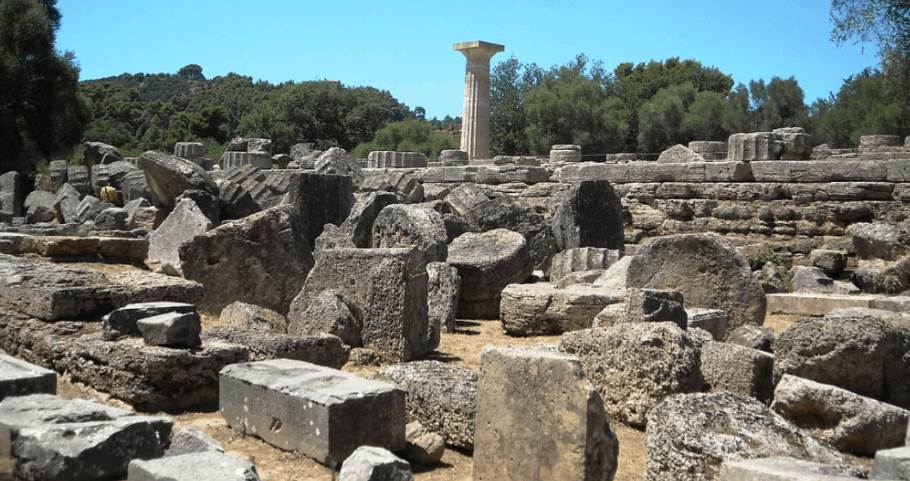
More interesting facts about the Statue of Zeus at Olympia
6. According to contemporary descriptions, the statue of Zeus was sitting on a cedarwood throne and held a Nike in one hand, the Greek goddess of victory, and a scepter with an eagle on top in the other.
7. Apart from its huge size and its locations inside the Temple of Zeus, other things that made the Statue of Zeus at Olympia so impressive were its decorations. His drapery was made of gold and his throne was ornamented with ebony, ivory, and precious stones.
8. The Temple of Zeus in the city of Olympia where the statue of Zeus resided was built by Elean architect Libon. Construction started in 470 B.C. and is believed to have finished around 457 B.C. This means that the Temple of Zeus already existed for 22 years before the statue of Zeus was commissioned.
9. Because the Statue of Zeus was so huge, it most probably wasn’t an easy job order to get it in position inside the temple. It required both the dismantling of the internal columns to reposition them, and make substantial modifications to the cella, the small chamber inside the temple that the statue was placed in.
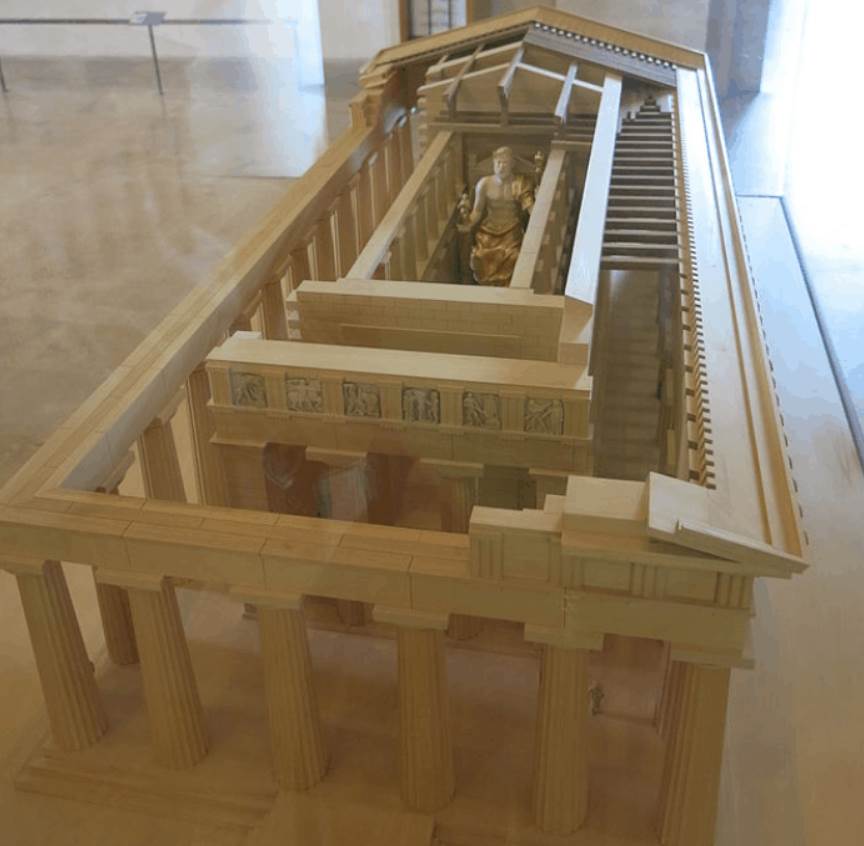
10. Olympia was a very humid place. Because of this, the ivory panels that created the skin of the statue required constant care. So much that it needed to be coated with olive oil once a day to avoid the ivory cracking.
11. According to Pausanias, traveler, and geographer that visited the Temple of Zeus and saw the statue inside it, the sandals Zeus were wearing were made of gold, and the pedestal they were resting on was decorated with reliefs that depicted Amazonomachy, Mythical battles between the Greeks and the Amazons.
12. Roman Emperor Constantine the Great converted to Christianity in 312 A.D. he instantly did a very Christian thing. He ordered that the gold inside all pagan temples and from all pagan monuments should be stripped. This included the gold and precious stones used to decorate the Statue of Zeus at Olympia.
13. Along with abolishing pagan temples and shrines, the Romans also abolished pagan rituals. Remarkably, the Olympic Games were considered as such and were banned in 392 A.D. by Emperor Theodosius I.
14. The statue was once partially destroyed by a severe earthquake that happened in 170 B.C. They were, however, able to restore it and bring it back to its original glory.
15. Phidias’ workshop was located right next to the Temple of Zeus. It was rediscovered in the 1950s and confirms that Phidias was not only the creator of the statue but also that it was made of the materials described in contemporary descriptions.
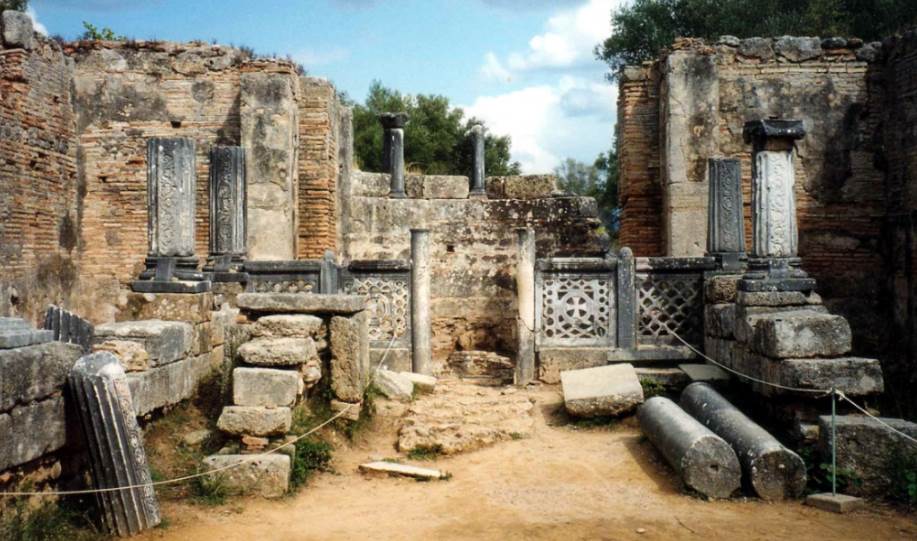
16. Remarkably, some items were discovered in the workshop of Phidias. One of them is a cup saying “ΦΕΙΔΙΟΥ ΕΙΜΙ” or “I belong to Phidias.” He was protective of his possessions.
Secondly, a variety of tools were found to work gold and ivory, the materials described to have been used to create the statue of Zeus at Olympia. Finally, several precious stones were found as well, proving the statue was majestically decorated as described.
17. How Phidias, the creator of the Statue of Zeus at Olympia died remains unclear. There are two separate accounts of what happened, and none of them are enviable. One account mentions that he was enprisoned in Athens because of political reasons and died shortly after. Another account mentions he was put to death by the Eleans after he finished his work on the Statue of Zeus.
18. The area where the Temple of Zeus stood was abandoned in the 6th century by either a tsunami or by the flooding of the Kladeos river. The entire site was covered with mud for about 12 centuries. It was identified again in 1766.
19. Thorough excavations of the site started in the 19th century, with partial excavation starting by a French team in 1829 and systematic excavations under the direction of the German Archaeological Institute starting in 1875. Excavations on the site are still ongoing today.
20. Pediments of the Temple of Zeus found during the ongoing excavations at the site can be admired in the Archaeological Museum of Olympia. The museum has a long history as it was opened in 1882, and at that time, it was the first museum in Greece to open outside of Athens. What a better place than one of the most famous places in the world, the city the Olympic Games were invented!
